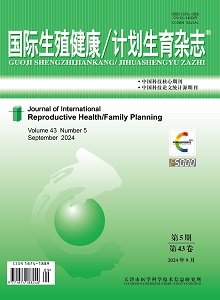Objective: To integrate and analyze the application of traditional Chinese medicine (TCM) with assisted reproductive technology (ART) at the different periods of the treatment from those famous TCM experts, based on a data mining. Methods: To search the related documents of the application of TCM and ART from famous TCM experts in the CNKI、CQVIP、Wanfang、CBM databases of Chinese. We aimed to establish a literature analysis database for the integration and induction to obtain the distribution of commonly used drugs. Results: This study included 112 qualified documents, involving 36 famous TCM experts. The total number of drugs in the down-regulation period was 13, with 77 flavors of related drugs and 224 cumulative frequencies of occurrence. The higher frequencies were 55.94% of "drugs for tonifying deficiency", 10.89% of "drugs for activating blood circulation and removing blood stasis", 6.44% of "heat-clearing drugs", 5.45% of "astringent drugs", and 5.45% of "water-inducing and dampness-expelling drugs". In the ovulation promotion period, the total number of drugs was 13, with 92 flavors of related drugs and 398 cumulative frequencies of occurrence. In this period, the higher frequencies were of 61.34% of "drugs for tonifying deficiency", 8.68% of "drugs for activating blood circulation and removing blood stasis", 8.40% of "astringent drugs", 5.88% of "heat-clearing drugs", 5.32% of "water-inducing and dampness-expelling drugs", etc. In the transplantation period, the total number of drugs was 14, with 70 flavors of the relevant drugs and 372 cumulative frequencies. In the transplantation period, the higher frequencies were 68.78% of "drugs for tonifying deficiency", 5.80% of "drugs for dispelling wind-dampness" and 5.52% of "drugs for activating blood circulation and removing blood stasis". The drugs used after pregnancy were confirmed to have a total of 11 categories, with 47 flavors and 182 cumulative frequencies. During pregnancy, the higher frequencies were 59.88% of "drugs for tonifying deficiency", 9.30% of "drugs for dispelling wind-dampness", 7.56% of "heat-clearing drugs" and 5.23% of "astringent drugs". The correlation analysis of drugs of the four phases showed that there were 18 drug combinations in the down-regulation period, 14 drug combinations in the ovulation promotion period, 41 drug combinations in the transplantation period and 22 drug combinations after confirmation of pregnancy. Cluster analysis of the drugs used in the four periods showed that the core drug group was obtained in the down-regulation period: codonopsis pilosulae-licorice-atractylodes macrocephala-astragalus-jujube seed, radix dipsaci-fructus lycii -prepared rehmannia root-radix angelicae sinensis-rhizoma cyperi, prepared rehmannia root-radix paeonia lactiflora-donkey hide gelatin-radix dipsaci-rehmannia root. Ovulation promotion period got the core drug group including radix dipsaci-prepared rehmannia root-Chinese yam-fructus lycii-mulberry, radix dipsaci-prepared rehmannia root-radix angelicae sinensis-fructus lycii-salvia miltiorrhiza, prepared rehmannia root-fructus corni-Chinese yam-radix dipsaci-rehmannia root. The core drug groups obtained during the transplantation period were atractylodes macrocephala-radix dipsaci-Chinese taxillus herb-codonopsis pilosula-semen cuscutae, Chinese taxillus herb-semen cuscutae-radix dipsaci-scutellaria baicalensis-donkey hide gelatin, radix angelicae sinensis-semen cuscutae-liquorice-Chinese yam-morinda officinalis. The core group of drugs obtained after confirmation of pregnancy was atractylodes macrocephala-astragalus-liquorice-codonopsis pilosulae-radix dipsaci, semen cuscutae-radix dipsaci-atractylodes macrocephala-Chinese taxillus herb-donkey hide gelatin, atractylodes macrocephala-radix dipsaci-liquorice-radix boehmeriae- tuchung. Conclusions: The "drugs for tonifying deficiency" are commonly used in the four periods, which belong to the liver, kidney and spleen meridian. The common drug characteristics of the four periods is "Based on tonic, laxative and tonic used together, mainly with warm, flat, sweet and bitter nature of TCM". According to the different characteristics of the four periods, TCM with different prescription drugs can be used to improve the curative effect. In the period of down regulation, preventing the agitation of qi and blood is the main focus. In the period of ovulation induction, tonifying the kidney essence is the main focus. At the same time, a small amount of warming drugs should be added. Tonifying the kidney should be combined with astringent and promotion, so as to prevent the excessive depletion of the kidney essence. After the transplantation and embryo implantation, the efficacy of TCM lies in the "stabilization of the fetus" and the tonicity of mother′s qi and blood.

